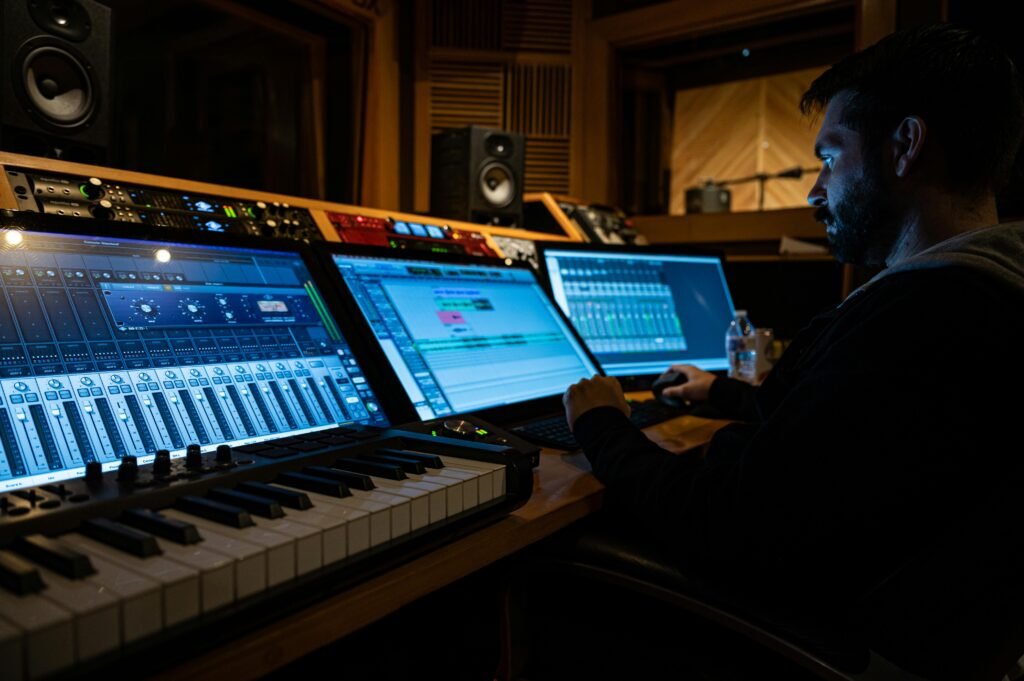As a professional composer, understanding the science of sound is essential for creating immersive and captivating music productions. Sound is a complex phenomenon that can be analyzed and manipulated to evoke emotions, convey messages, and tell stories. In this article, we will delve into the science behind sound, exploring concepts such as frequency, timbre, and spatial audio, and their significance in music production.

The Fundamentals of Sound
1. Frequency:
Frequency refers to the rate at which a sound wave vibrates and is measured in Hertz (Hz). Higher frequencies correspond to higher pitch sounds, while lower frequencies correspond to lower pitch sounds. In music production, understanding frequency allows composers to sculpt the tonal balance of their compositions and create a sense of depth and richness.
2. Amplitude:
Amplitude refers to the intensity or loudness of a sound wave and is measured in decibels (dB). Amplitude determines the volume or level of a sound, with higher amplitudes corresponding to louder sounds. Manipulating amplitude allows composers to control the dynamics and impact of their music.
3. Timbre:
Timbre, also known as tone color or quality, refers to the unique characteristic of a sound that distinguishes it from other sounds with the same pitch and loudness. Timbre is influenced by factors such as harmonic content, envelope shape, and instrument type, and plays a crucial role in shaping the character and emotion of a musical composition.
Spatial Audio
Spatial audio refers to the perception of sound in three-dimensional space, including aspects such as localization, distance, and room acoustics. Spatial audio techniques allow composers to create immersive and realistic listening experiences that transport listeners into virtual environments. Key concepts in spatial audio include:

1. Stereo Imaging:
Stereo imaging refers to the placement and distribution of sound sources across the stereo field. By panning sounds left or right and adjusting their levels, composers can create a sense of width and separation in their mixes, enhancing spatial perception and clarity.
2. Reverberation:
Reverberation, or reverb, is the persistence of sound reflections in an enclosed space after the sound source has stopped. Reverb adds depth, dimension, and realism to audio recordings, simulating the acoustics of different environments such as concert halls, studios, and chambers.
3. Spatialization:
Spatialization techniques involve manipulating the perception of sound location and movement in three-dimensional space. Techniques such as panning, distance attenuation, and surround sound processing allow composers to place sounds at specific locations within a virtual environment, creating immersive and spatially dynamic audio experiences.
The Role of Science in Music Production
Understanding the science of sound empowers composers to make informed decisions about every aspect of their music production process. By applying scientific principles to the creation and manipulation of sound, composers can achieve greater control, precision, and creativity in their compositions. Whether shaping the frequency spectrum, manipulating timbral characteristics, or spatializing audio elements, a solid understanding of sound science is essential for achieving professional-quality results in music production.
Conclusion
The science of sound forms the foundation of music production, providing composers with the knowledge and tools to create immersive, engaging, and emotionally impactful music compositions. By understanding concepts such as frequency, timbre, and spatial audio, composers can manipulate sound with precision and creativity, crafting compositions that resonate with listeners on a profound level. Embrace the science of sound in your music production journey, and unlock the full potential of your creative vision.